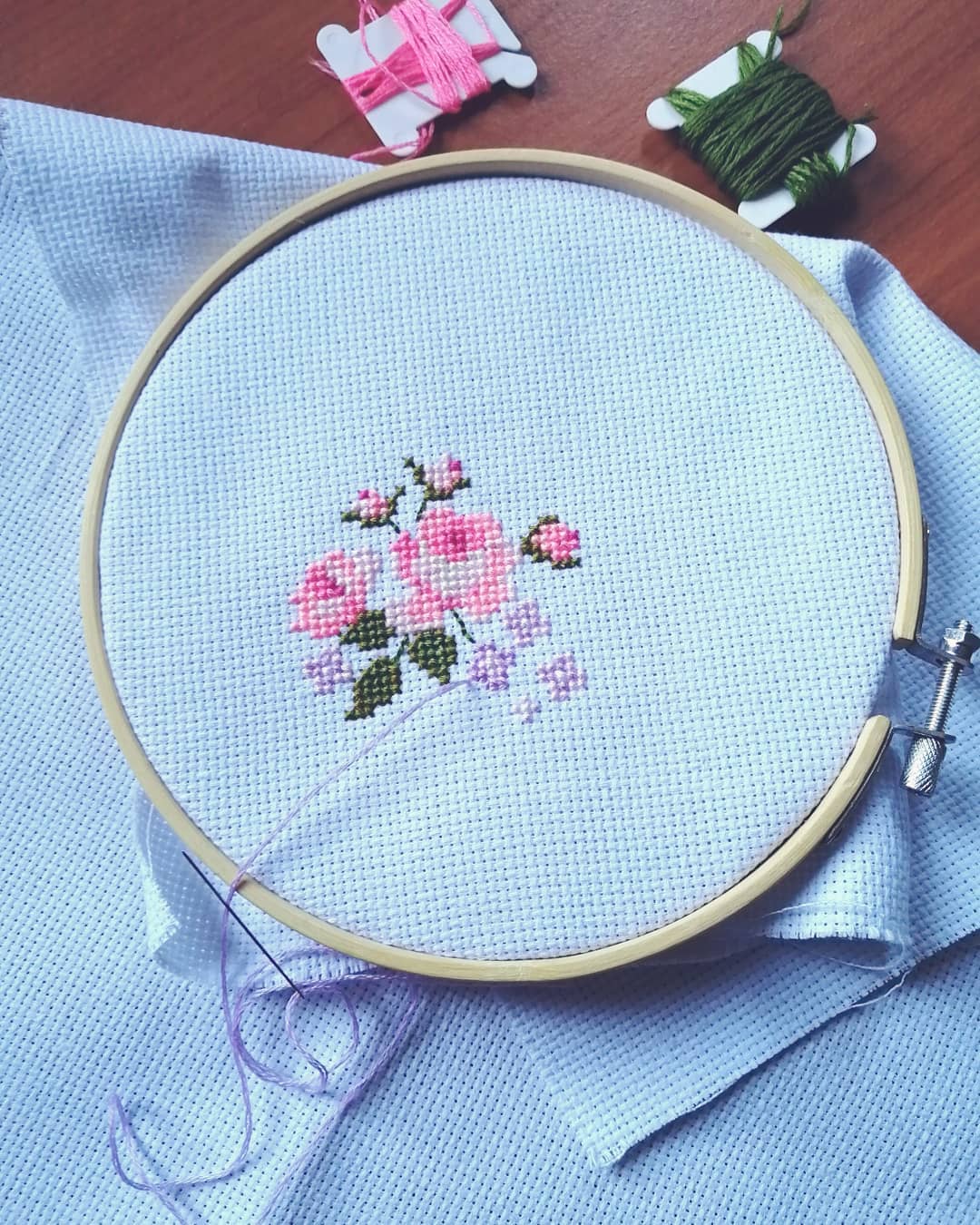There’s a popular idiom in English: ‘A stitch in time saves nine.’ In other words, the best way to tackle a large task is to take small, consistent steps to complete it day by day. 🧵
It so happens that these days I am trying to complete a small cross-stitch design for a friend. It is a slow project since I can only see the stitches clearly in daylight and the cloudy November weather hasn’t helped me much!
Stitching patiently has reminded me of a quietly perseverant character in Anne Bronte’s classic, Agnes Grey (1847).
The book is a light yet interesting read, telling the story of a young woman in Victorian England, Agnes Grey, who wants to earn a living and support her family by working as a governess (a private, residential teacher to the children of wealthy families). Through this work, Agnes discovers some sorrows, joys, and new strengths of character.
I like very much how Anne Bronte depicts the transformation of Agnes Grey — from a young girl who was petted by her family at home, to a mature character through all she learns and lives through. 🦋
At the beginning of the story, Agnes feels her awkwardness in not being able to do much. In some ways, when we are first learning a language, we too may feel out of place and uncomfortable with our progress (or lack thereof).
In the passage below she describes how she feels about not being able to sew like other women of her age (notice Bronte’s use of ‘single’ and ‘even’ here to emphasise this frustration):
📙 There was always plenty of sewing on hand; but I had not been taught to cut out a single garment, and except plain hemming and seaming, there was little I could do, even in that line; for they both [Agnes’ mother and older sister] asserted that it was far easier to do the work themselves than to prepare it for me: and besides, they liked better to see me prosecuting my studies, or amusing myself — it was time enough for me to sit bending over my work, like a grave matron, when my favourite little pussy was become a steady old cat.
– Anne Bronte, Agnes Grey (1847)
The secret to Agnes Grey’s growth and transformation is her willingness to learn, to practice and be corrected. Slowly but surely she eventually learns many skills, including how to sew well. Later in the story, she becomes governess to a rich young girl called Miss Murray, who is petted and spoiled by her family but, unlike Agnes, does not want to grow out of it. Instead, Miss Murray practices only what she enjoys (music) and avoids sewing (which she doesn’t like), leaving her needlework to Agnes to finish for her. 🧶
This is how Miss Murray is described:
📙 To music, indeed, she devoted too much of her time, as, governess though I was, I frequently told her; but her mother thought that if she liked it, she could not give too much time to the acquisition of so attractive an art. Of fancy-work [embroidery, stitching, sewing] I knew nothing but what I gathered from my pupil and my own observation; but no sooner was I initiated, than she made me useful in twenty different ways: all the tedious parts of her work were shifted on to my shoulders; such as stretching the frames, stitching in the canvas, sorting the wools and silks, putting in the grounds, counting the stitches, rectifying mistakes, and finishing the pieces she was tired of.
– Anne Bronte, Agnes Grey
Notice how Agnes, the narrator, at first ‘knew nothing’ about embroidery, but with intentional practice she gradually learned it. And she was so willing to learn and improve herself that she even finished ‘the tedious [tiresome] parts’ of Miss Murray’s work for her.
Further on in the story, we hear of Agnes being competent enough at sewing that she is able to help out a person in need.
…
What can we learn from the story of Agnes Grey’s learning to sew?
I think this tale highlights one of the most important elements in language learning, indeed one that is often ignored: our commitment to learn.
Think of it: it is likely that Miss Murray never learned to sew confidently for herself, since her life continued to be dependent on others, easy and comfortable. What a pity, especially having had a good teacher!
It happens so often in education that the teacher’s role in the learning process is stressed over that of the student. Without a doubt, students need excellent teachers if they are to learn well.
However, if students approach language study thinking that there is always someone else who can finish any ‘tedious parts’ of their study for them, they will never truly learn and become confident in the difficult skill of learning a language like English.
Nothing compares with being committed to learn something for yourself and eventually achieving that goal!
🕰️ Learning a language takes so much practice, time, and work — but the more students like you are prepared to put in their effort, with the support of good teachers, the more you will learn.
I have been inspired today by meditating on Agnes Grey’s perseverance and willingness to learn. I hope that this story encourages you too to keep up your good work studying English. Every step of the way counts – you can be proud of the progress you make with every effort!




